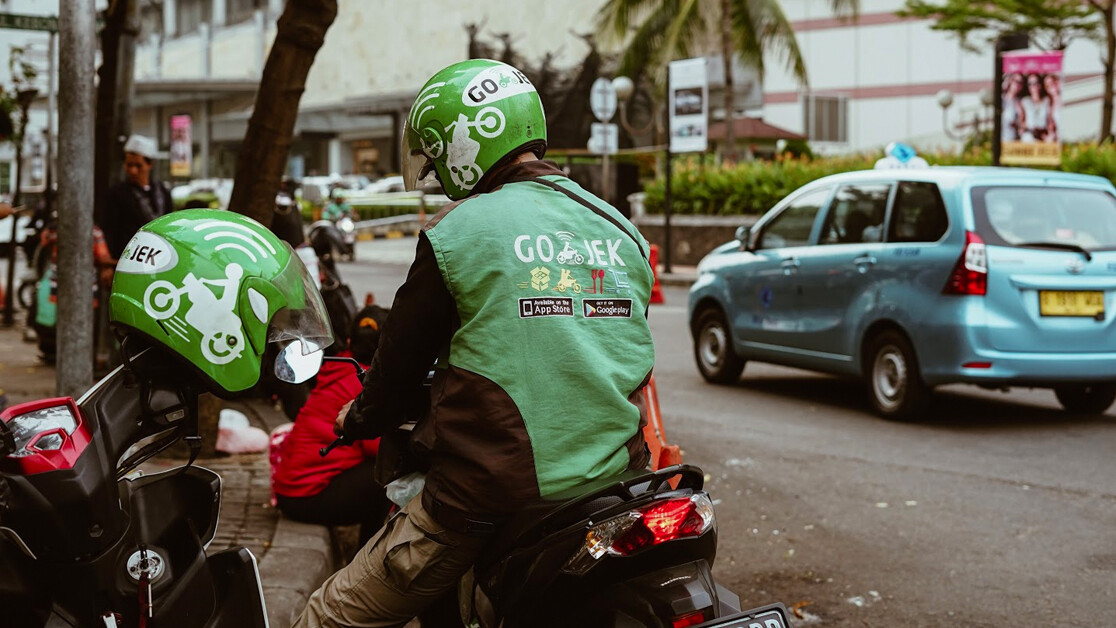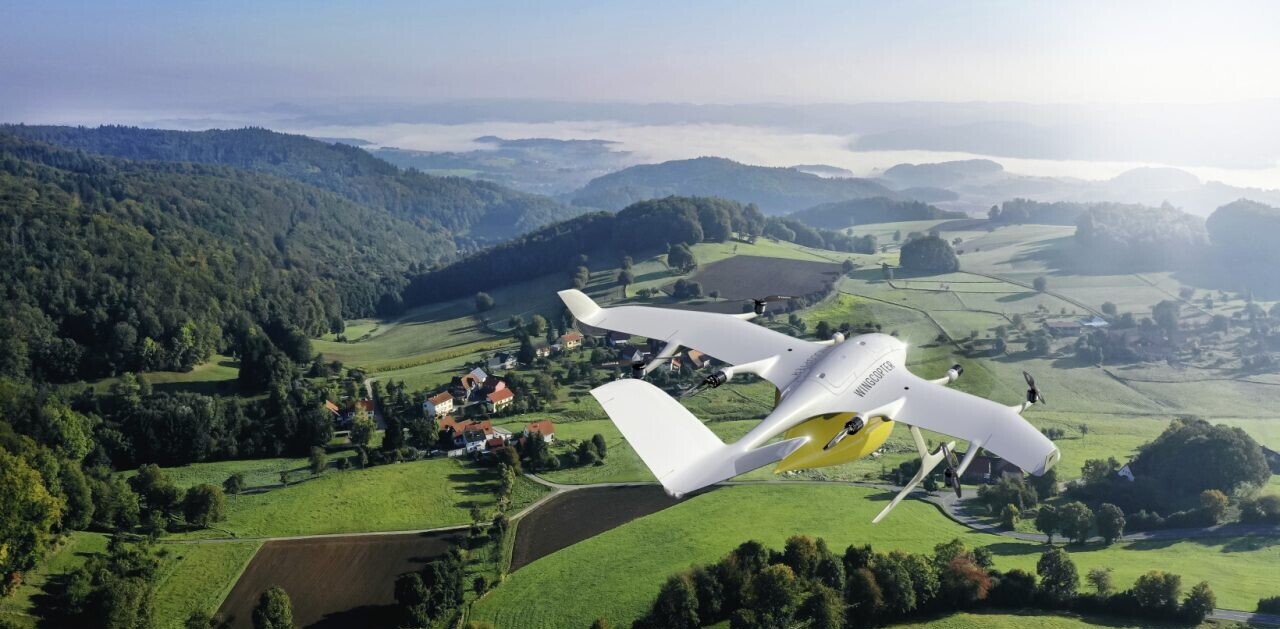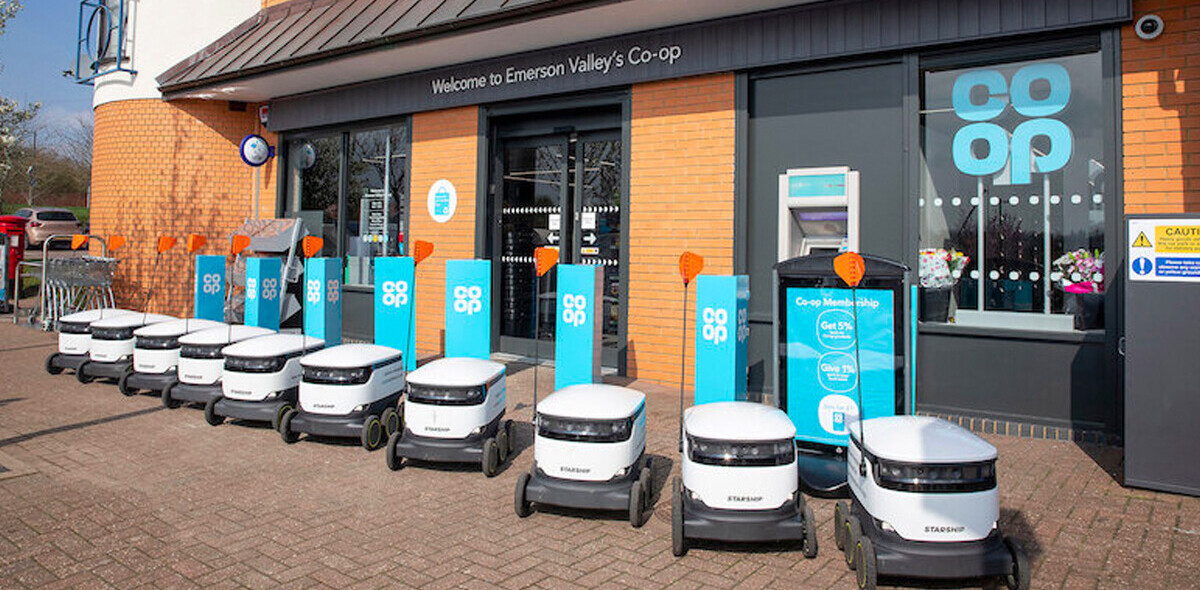
COVID-19-Lockdown-Stay home-Physical distancing-Online shopping-Demand for delivery.
The above set of words sum up most of 2020. With the physical world of retail becoming less accessible, the convenience of online shopping has made the former even less attractive and has driven consumers to expect on-demand delivery for almost everything (if not all) they need.
As per the World Economic Forum & a report from IBM, E-commerce was projected to grow by nearly 20% in 2020 (if not more). Traditionally brick and mortar big-box stores such as Walmart and Target saw their online business approximately double in the first half of the year, while Amazon saw 40% growth in sales. OECD quoted in its report that the growth is considerably fueled by new consumer segments (e.g. the elderly), shift to non-luxury everyday necessities, product mix (e.g. groceries) in addition to new firms switching to online.
A business boom is often accompanied by bottlenecks in the system. For e-commerce, it has traditionally been logistics (supply and demand), but for the new COVID-struck sector it has been mainly at the last-mile delivery (demand side). While stalwarts in this field such as FedEx, UPS, DHL, Amazon are experts in navigating such challenges, the sheer volume the sector is going through since March 2020 has given rise to many opportunities. Innovation has been the key and the last-mile delivery space has seen a great deal from modes (trucks, vans, scooters, bikes) to collaborative partnerships (technology, gig-economy, delivery-as-a-service).
[Read: ]
Given that amount of surge in last-mile delivery demand, it quickly cascades down to an increased number of trips (mostly motorized vehicles), especially in cities. This in turn affects fundamental transportation parameters such as congestion, curbside parking, GHG emissions, and impacts social factors such as road-pedestrian safety. Cost of deliveries needs to keep up with demand for ‘same-day’ or even ‘same-hour’. One way to overcome this is to charge a premium, but that creates an equity gap of who can afford such services. By all means, ecommerce companies need to consider the cost structures in the last-mile delivery in their P&L. This structure is split into three major streams, viz. technology, resources, and assets. Technology includes shipment tracking, route navigation, communication. Resources basically talk about delivery personnel and scheduling. Assets here include fleet and (delivery) partner contracts.
We know how each of these have seen outsourcing, but can the model be 100% ‘asset-less’ which would transform this space altogether? How can smaller local retailers and home-grown businesses thrive and compete primarily on product while the last-mile service remains fair across order volume?
Shared mobility could play a bigger role here. One of the pandemic silver linings that we’ve observed in the past months – fall in utilization levels in shared mobility businesses owing to health related concerns of customers – led to creative alliances between the gig-economy and shared mobility to provide ‘last-mile delivery’-as-a-service. We looked at our shared mobility network across the EU, US, LatAm, Canada, India , and the Middle-east to explore such examples. This article will address the following:
- Similarities and differences in the last-mile delivery and shared mobility models
- How effective is Delivery-as-a-service (DaaS, anyone?)
- Synergies that await a deeper link between shared-last-mile delivery models
Complementing business models: last-mile delivery and shared mobility
Many aspects of the two business models are very similar fundamentally. For instance, both of them rely heavily on the end customer experience. The term ‘contactless’ has become a default expectation and both businesses have embraced this to gain competitive edge. ETA (expected time of arrival) and convenience have been greatly influenced by technology in creating the targeted customer experience. Real-time-tracking, step-by-step notifications, digital payments & acknowledgments are a few of the parameters both businesses leverage to attract and retain customers. These models have disrupted their conventional way of operations while introducing an innovative concept shifting the paradigm in experts’ opinions. We split this comparison across 3 areas; customer experience, financials, and challenges.
1) Customer experience
Both sectors widely rely on technology to deliver competitive customer experiences. The customers for a majority portion are end consumers (individuals) and depend on the market and product, they have very ‘stickiness’ (loyalty) to any given brand and they switch easily between competitors. The key difference here is that last-mile delivery services leverage their contracts, relationships with the retailer where the end consumer does not have a choice but to accept the service. Shared mobility on the other hand, is concerned mostly with the service MSPs (mobility service providers) provide.
While end consumers might not have a choice, the clients (retailers or ecommerce businesses) will consider how efficiently the communications can be integrated into their platform. The retailer platform being the ‘face’ of the business integrating delivery tracking and scheduling becomes vital. There could be logistics companies such as FedEx, DHL, Aramex which have robust systems, or tech-based platforms primarily serving the food industry such as UberEats, Instacart, Deliveroo. The latter mostly operate in the gig economy space where the platforms only provide the technology. Tech provides a great bridge between shared mobility and delivery services enabling seamless integration.
In short, delivery is all about a B2B2C relationship. Shared mobility often being at the B2C end, proves to be a great enabler in the last mile relationship.
2) Financials and cost structures
Logistics and delivery companies heavily rely on connectivity and to an extent on availability of a fleet of vehicles. The difference between delivery and shared mobility currently is that most of the vehicle models in shared mobility today aren’t fit to provide the required cost-efficiencies owing to limited cargo capacity in the bike, scooter, car-sharing fleets. Prime cost drivers in the delivery models are operational i.e. resources, assets (vehicles) and connectivity. Having said that, both delivery and shared mobility businesses need vehicles (and thus have huge asset-costs) and a state-of-the-art software platform with a customer facing interface (App). However, only one needs access to a pool of drivers as a resource. With connectivity and technology costs could be spread across the trips, asset-lite delivery companies such as GoJek, Uber, Roadie, Instacart, Picap, Fetcher and Quiqup work with a pool of delivery drivers which is a great fit as we see today.
3) Challenges and leverages
The challenge posed by target ETAs to delivery corresponds to what proximity to a shared vehicle for shared mobility. In both cases it’s all about a more convenient, faster delivery of services. Last-mile delivery operations are dictated by the ever-increasing consumer demand for shorter ETAs. This places enormous pressure on moving goods efficiently through the city while managing costs. For larger firms, economies of scale come into play and the volume of orders makes it easy to ensure optimum utilization of cargo capacity which also helps in spreading the costs over the number of deliveries in one trip for the driver. Smaller businesses find navigating this constraint a little more challenging. Current shared mobility and last-mile delivery collaborations work well for shorter, small order size businesses typically food delivery (mostly restaurants) and on-demand courier services. To match target ETAs in delivery, shared mobility needs to ramp up the critical mass of cargo-friendly options in their fleet so as to provide the ideal proximity. To leverage the cargo use cases, both sectors must see more creativity.
Delivery as a service (or DaaS)
Enter, the world of outsourcing, asset-lite, ‘delivery-as-a-service’ providers. The freight world has been working on this model for years with annual (at times longer) contracts awarded to individual truck owner-drivers to move goods around. The last-mile space, however, is starting to witness massive interests in this model.
This space is a great example of how a crisis situation can suddenly change the value proposition of any business model. Pre-COVID, such services – the ‘deliver anything’ Apps – were seen as quite the ‘nice-to-haves’ in a city. With nationwide lockdowns and constraints on visiting stores in-person, such services have become quite the ‘must-haves’ for any business. Their value is still centered around the businesses not having to invest in logistics, a solution quickly customizable to customers, lower operational costs, and above all, leveraging the network such services bring.
Such solutions help businesses overcome difficulties in delivery operations. Firstly, they take over the customer service piece. End consumers only interact with the delivery teams and are kept updated every step of the way and in many cases these support reverse logistics (returns) too. Secondly, resource management is a breeze (at least for the businesses) as the service providers leverage the gig economy pool of available drivers/riders for physically moving goods. Lastly, operational efficiencies are being improved upon by ways of outsourcing even the asset management piece. This is where shared mobility has seen collaboration. We see delivery drivers granted discounted access to mopedsharing, carsharing, or micromobility services in the city or the bigger play by Uber and Lyft to create a separate category and present choices to their millions of customers and vast driver network.
What’s next? How could the last-mile delivery business evolve further? What are the challenges?
The inevitable problems – congestion and emissions.
It is obvious that with such phenomenal growth of ecommerce, traffic congestion would become a grave concern. Why is that a ‘business challenge’? Because that has a huge bearing on the #1 value proposition of these businesses – the ever shrinking target ETAs. The World Economic Forum estimates indicated that the ecommerce growth would increase vehicles on the road by 36% and result in 30% more vehicle-led emissions by 2030. And this analysis was released in January 2020!
Although shared mobility has been fitting in well by providing ‘vehicle’ needs for last-mile delivery, a bigger impact on reducing the number of vehicles and thereby emissions could be realized. The assets (vehicles) in the business could be used as-a-service too. Coupled with electric vehicles (esp of smaller sizes), shared vehicles could prove to be the last piece in this transforming the last-mile delivery.
Leveraging synergies between the two businesses
1) Reducing congestion and emissions
Globally cities have embarked on aggressive climate action plans which requires reduction in GHG emissions. Delivery causes nearly 40% of a major city’s pollution. Shared vehicles will eventually reduce the volume of vehicles moving around, delivery trips could be hyper-localized within denser areas. Secondly, these shared vehicles can be smaller, lighter, more accessible ones, and leveraging non-motorized models (think ecargo bikes or solutions such as Urb-E, Nuwiel, Ono, EAV, Bio-Hybrid). With adequate battery range (70~100km) such vehicles not only reduce congestion and emission, but also provide a great opportunity to overcome certain constraints. Thus delivery drivers will not require a motor driving license, will have access to no-car zones in the city, will enjoy the ease of the ‘park-drop-go’ way of last-mile deliveries especially in busy streets, and not to mention will pay reduced insurance costs compared to driving motor vehicles (cars/vans).
Lastly, such vehicles when available over a shared platform will let drivers avoid idle (empty) drives back to the point of origin (typically the warehouse). With a smaller cargo capacity such shared vehicles will serve as the perfect balance between just being tiny delivery use cases today (e.g. food deliveries) and having over capacity (e.g. cars/vans) which impact cost per delivery/trip.
2) Shared infrastructure
Assets do not just mean vehicles. The infrastructure needs to be considered too. Owning a fleet needs maintenance infrastructure or for instance, charging infrastructure in case of electric cargo vans. Shared fleets would have shared infrastructure. These fleets often are already stationed around high footfall areas and in many cities have preferential city-center, curbside access. By design, these are subject to higher utilization and with a shorter distance, localized, less duration trips would prove more economical for the operators (fleet provider) and clients (delivery company, drivers). Shared electric delivery vehicles will be charged through public chargers or at respective stations and there’s a great potential for improving operational efficiencies there. This has a great impact on creating a useful in-city infrastructure for public use too.
3) Flexibility between personal vs commercial use
Currently, the way that shared mobility businesses are able to improve utilization of vehicles is by serving mixed use cases. For instance, bike and moped sharing services are fairly open to general public and delivery drivers which enhances the purpose of these assets. With specialized delivery vehicles or functional add-ons we can expect such mixed use cases too (e.g. Modo CooP Carshare and U-Haul available today). New business models are being tried and are seeing the demand for such mixed use cases.
Shared mobility financials are focused on utilization rates and that drives efficiencies in operations. With increased demand (personal and commercial use) and serving a diverse market (parcel delivery, restaurant and grocery deliveries, moving services) leveraging the growth of the gig economy, last-mile delivery will be able to see a climate-action-friendly growth in the booming e-commerce industry.
4) One step closer: A shared-autonomous future
In the mobility industry’s CASE (Connected Autonomous Shared Electric) tech advancement matrix, we have so far linked 3 of them. How does an autonomous fit in? With shared and electric business cases being widely accepted in the last-mile delivery space, more than just a handful of companies have taken huge strides in advancing the autonomous side of deliveries.
The quickest, arguably less complicated, and thereby less opposed business model is that of freight. The more complicated urban last-mile delivery space has seen impressive pilot programs globally (viz., Canada and Japan) and recently has seen acceptance at the city authority level too. These provide excellent opportunities for realizing unmanned, off-shift hour operations and with services shared between businesses, will prove to be widely accessible for smaller local vendors as they would be for large ecommerce companies.
In conclusion
Remote working, online shopping, and on-demand delivery (mostly same day) as we know will continue to grow in popularity. The pandemic has, in some ways, made these even more mainstream as an expectation from end consumers. If thought of holistically, shared mobility can;
- enhance operational efficiencies in the delivery business, benefit from the support for electric vehicles and leverage gig economy
- improve financials on both sides (delivery and shared mobility) and providing an affordable delivery channel to smaller, local businesses
- help mitigate the adverse impact of urban congestion (by a higher utilization of the same vehicle for personal, commercial, cargo movement during the day/week) and emissions due to last-mile deliveries
Shared mobility, beyond its current use cases in the delivery business, has the potential to create a bigger impact in creating sustainable cities.
This article was written by Venkatesh Gopal, Business Development and Partnerships Manager, Movmi, on The Urban Mobility Daily, the content site of the Urban Mobility Company, a Paris-based company which is moving the business of mobility forward through physical and virtual events and services. Join their community of 10K+ global mobility professionals by signing up for the Urban Mobility Weekly newsletter. Read the original article here and follow them on Linkedin and Twitter.

SHIFT is brought to you by Polestar. It’s time to accelerate the shift to sustainable mobility. That is why Polestar combines electric driving with cutting-edge design and thrilling performance. Find out how.
Get the TNW newsletter
Get the most important tech news in your inbox each week.





